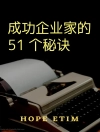An innovative guide that identifies what distinguishes the best
financial risk takers from the rest
From 1987 to 1992, a small group of Wall Street quants invented
an entirely new way of managing risk to maximize success: risk
management for risk-takers. This is the secret that lets tiny
quantitative edges create hedge fund billionaires, and defines the
powerful modern global derivatives economy. The same practical
techniques are still used today by risk-takers in finance as well
as many other fields. Red-Blooded Risk examines this
approach and offers valuable advice for the calculated risk-takers
who need precise quantitative guidance that will help separate them
from the rest of the pack.
While most commentators say that the last financial crisis
proved it’s time to follow risk-minimizing techniques, they’re
wrong. The only way to succeed at anything is to manage true risk,
which includes the chance of loss. Red-Blooded Risk presents
specific, actionable strategies that will allow you to be a
practical risk-taker in even the most dynamic markets.
* Contains a secret history of Wall Street, the parts all the
other books leave out
* Includes an intellectually rigorous narrative addressing what
it takes to really make it in any risky activity, on or off Wall
Street
* Addresses essential issues ranging from the way you think about
chance to economics, politics, finance, and life
* Written by Aaron Brown, one of the most calculated and
successful risk takers in the world of finance, who was an active
participant in the creation of modern risk management and had a
front-row seat to the last meltdown
* Written in an engaging but rigorous style, with no
equations
* Contains illustrations and graphic narrative by renowned manga
artist Eric Kim
There are people who disapprove of every risk before the fact,
but never stop anyone from doing anything dangerous because they
want to take credit for any success. The recent financial crisis
has swelled their ranks, but in learning how to break free of these
people, you’ll discover how taking on the right risk can open the
door to the most profitable opportunities.
表中的内容
Acknowledgments xi
Chapter 1 What This Book Is and Why You Should Read It 1
Risk, Danger, and Opportunity 2
Red- Blooded Risk Management 4
Risk and Life 7
Play and Money 9
Frequentism 11
Rationality 13
Bets 15
Exponentials and Culture 18
Payoff 20
Chapter 2 Red Blood and Blue Blood 23
Chapter 3 Pascal’s Wager and the Seven Principles of Risk Management 29
Principle I: Risk Duality 32
Principle II: Valuable Boundary 33
Principle III: Risk Ignition 35
Principle IV: Money 38
Outside the Va R Boundary 40
Principle V: Evolution 45
Principle VI: Superposition 48
Principle VII: Game Theory 49
Chapter 4 The Secret History of Wall Street: 1654- 1982 57
Pascal and Fermat 58
Poker 61
Advantage Gamblers 62
Sports Betting 63
Quants to Wall Street 66
Finance People 68
Real Finance 69
Chapter 5 When Harry Met Kelly 73
Kelly 74
Harry 76
Commodity Futures 79
If Harry Knew Kelly 84
Investment Growth Theory 88
e Raider.com 92
MPT Out in the World 96
Chapter 6 Exponentials, Vampires, Zombies, and Tulips 101
Types of Growth 102
The Negative Side 105
Tulips 106
Tulip Propaganda 108
Quantitative Tulip Modeling 111
Money 112
Chapter 7 Money 117
Chapter 8 The Story of Money: The Past 125
Property, Exchange, and Money 126
Paleonomics 128
Transition 131
What Money Does 134
Risk 135
Government and Paper 138
Paper versus Metal 142
1776 and All That 145
Andrew Dexter 147
A Short Digression into Politics and Religion 150
Chapter 9 The Secret History of Wall Street: 1983- 1987 155
Effi cient Markets 157
Anomalies 159
The Price Is Right . . . Not! 161
Effi ciency versus Equilibrium 162
Beating the Market 165
Paths 170
Sharpe Ratios and Wealth 174
1987 177
Chapter 10 The Story of Money: The Future 179
Farmers and Millers 180
Money, New and Improved 183
A General Theory of Money 185
Value and Money 189
Numeraire 191
Clearinghouses 196
Cash 197
Derivative Money 200
The End of Paper 203
Chapter 11 Cold Blood 207
Chapter 12 What Does a Risk Manager Do?–Inside Va R 213
Professional Standards 213
Front Offi ce 215
Trading Risk 217
Quants on the Job 218
Middle Office 222
Back Office 225
Middle Office Again 227
Looking Backward 228
Risk Control 230
Beyond Profi t and Loss 232
Numbers 234
The Banks of the Charles 236
Waste 238
The Banks of the Potomac 241
The Summer of My Discontent 245
Validation 247
Chapter 13 Va R of the Jungle 251
Chapter 14 The Secret History of Wall Street: 1988- 1992 255
Smile 256
Back to the Dissertation 258
Three Paths 262
An Unexpected Twist 265
Surprise! 267
Computing Va R 271
Chapter 15 Hot Blood and Thin Blood 277
Chapter 16 What Does a Risk Manager Do?– Outside Va R 283
Stress Tests 283
Trans- Va R Scenarios 287
Black Holes 289
Why Risk Managers Failed to Prevent the Financial Crisis 290
Managing Risk 296
Unspeakable Truth Number One: Risk Managers Should Make Sure Firms Fail 299
Unspeakable Truth Number Two: There’s Good Stuff beyond the Va R Limit 305
Unspeakable Truth Number Three: Risk Managers Create Risk 309
Chapter 17 The Story of Risk 313
Chapter 18 Frequency versus Degree of Belief 323
Statistical Games 324
Thorp, Black, Scholes, and Merton 329
Change of Numeraire 333
Polling 336
The Quant Revolution 341
Chapter 19 The Secret History of Wall Street: 1993- 2007 345
Where Did the Money Come From? 348
Where Did They Put the Money? 359
Where Did the Money Go? 364
Chapter 20 The Secret History of Wall Street: The 2007 Crisis and Beyond 369
Postmortem 379
A Risk Management Curriculum 387
One Hundred Useful Books 393
About the Author 401
About the Illustrator 403
Index 405
关于作者
AARON BROWN is risk manager at AQR Capital Management and the author of The Poker Face of Wall Street (Wiley), selected one of the ten best books of 2006 by Business Week, and A World of Chance with Reuven and Gabrielle Brenner. In his thirty-year Wall Street career, he has been a trader, portfolio manager, head of mortgage securities, and risk manager for institutions including Citigroup and Morgan Stanley. He also served a stint as a finance professor and was among the top poker players in the world during the 1970s and 1980s. He holds degrees in applied mathematics from Harvard and in finance and statistics from the University of Chicago.












